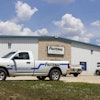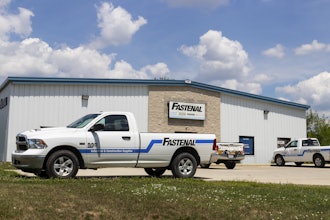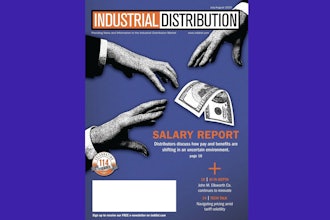
As distributors, we are giant information machines. We gather so much information each day. Best-in-class companies acknowledge that distribution is a "data business" and use that to their advantage.
Managing the sales force is an opportunity-rich area for taking advantage of such data through analysis. We can all agree that decisions involving sales management and customers are more emotion-driven than data-driven. The nice thing about data is that, for the most part, it removes emotions from decision-making – bringing science to the art of selling. The sales force is the primary customer-facing mechanism for most distributors. However, too often, salespeople do not have the required information and tools to make the best pricing and service-delivery decisions. This comes down to sales management and enablement – or lack thereof.
The sales force regularly decides which customers to approach, serves those customers, and maintains a positive relationship. But without the right resources, it's hard for them to know if their decisions are optimal for their firm or the supply chain.
And although firms place a great deal of emphasis on sales force output, most do not understand how to direct the sales force on an optimal path for the firm's success. These companies monitor and control sales force activities, but few have a formal means for optimizing sales force activities.
Before companies can effectively lead their sales forces toward the activities that provide the greatest return on time and money invested—and give the most value to their customers—they must first identify these high-value activities.
To do so, distributors must work to understand sales force capabilities through stratification and performance evaluation. Once sales force stratification is in place, adjusting your support tools and training programs to different sales types is easier. In addition, a sales force stratification-driven management process can influence behavior for better effectiveness.
1. Define Your Performance Evaluation Criteria
In our work with Texas A&M’s Industrial Distribution program, we studied over 300 distributors and discovered that only 4% of the companies surveyed performed best practices in sales force performance evaluation.
Of the 4%, one chemical distributor classified its sales force based on critical factors – also considered data points – to determine appropriate training and management policy needs (customer, market, and geography assignments). The factors considered were:
- Gross profit dollars
- Sales effort involved
- Risk involved
- Length of sales cycle
- Amount of business (revenue dollars from new accounts)
- Number of active new accounts
- Growth trend with customers
Using multiple criteria to evaluate their sales force allowed them to make better sales force goals and training decisions.
2. Develop Your Stratification Model
Sales force stratification is a powerful tool for determining the rate at which a company can achieve its growth goals. For our purposes, we segment salespeople into four categories: hunters, farmers, rainmakers and defenders. If a company does not have the proper sales force mix, growth becomes challenging.
For example, if your growth strategy is market penetration (acquiring new customers), then hunters are required—those who can go after new accounts effectively. If your growth strategy is account penetration (increasing business with existing customers), farmers are needed—those who can cultivate deeper relationships. The two other categories are rainmakers—a combination of hunters and farmers—and defenders at the bottom of the scale, who are good at maintaining their current customer base but often struggle to grow them profitably.
The four types of salespeople differ in performance, which we'll outline in a later section. Understanding and developing a comprehensive sales force stratification model will help distributors invest wisely in resources (training, incentives, productivity tools, and so on) and achieve the right balance. For example, you can track whether a salesperson moves from one of the three types to a defender category.
Distributors should remove emotions from the equation using data to drive the process and move salesforce development forward in an unbiased way.
3. Segment Your Sales Capabilities
Segment your sales capabilities on two dimensions: sales force effectiveness and sales force efficiency. In doing so, you're measuring whether the sales force is doing things the right way—immediate/short-term goals (efficiency)—and whether they are doing the right things—long-term goals and a big picture for the company (effectiveness).
Each of these dimensions has a bearing on the sales force's performance and management.
Efficiency: Short-term goals are to sell more to increase revenue, generate profit (gross margin dollars and margin percentage), and improve account profitability and revenue with existing customers (maximize potential with existing customers). These five factors indicate efficiency:
- Total revenue dollars
- Revenue dollars per account
- Overall margin dollars
- Gross margin dollars per account
- Margin percentage
Effectiveness: Long-term goals are to increase the number of accounts (lower risk), grow the top line and bottom line, and increase trends (revenue and profitability). These four factors indicate effectiveness:
- Total accounts handled
- Number of new customers
- Sales trend
- Number of years (overall sales experience)
4. Assign Your Salespeople to Their Segments
Once you've designed your stratification model and segmented your sales capabilities, you can assign your salespeople to one of the four segments: rainmaker, hunter, farmer and defender.
Rainmakers score well on both efficiency and effectiveness. They work well with existing customers while at the same time generating new accounts at a faster rate. As a result, rainmakers move quickly up the sales career ladder and become regional sales managers or vice presidents of sales. Some rainmakers can also become business development managers, helping to develop overall organization growth strategies.
Hunters are good at generating new accounts — often to the exclusion of profitability. They will typically go after the competition's best customers.
Farmers are good at working with existing customers and identifying growth opportunities with the best accounts. They focus on increasing revenue with existing customers. They might not land as many new accounts as hunters, but they optimize current relationships.
Defenders are low on both efficiency and effectiveness. This group either needs better training or more effective tools. In some cases, the defender might not be the right fit in their current role. Training and proper management can move these folks to one of the other three groups or mark them for a change. Some firms believe that defenders operating as outside salespeople could become strong inside salespeople.
 Krishnadevarajan
Krishnadevarajan
Pradip Krishnadevarajan is co-founder of ActVantage, which helps distributors drive profitable growth through analytics. He has more than 15 years of experience helping hundreds of distributors while co-authoring seven books for the National Association of Wholesaler-Distributors. He recently released a margin recovery guide for distributors to use as they manage through the coronavirus pandemic. Before joining ActVantage, he co-founded the wholesale distribution-focused research lab at Texas A&M University's Industrial Distribution Program. Contact Pradip at [email protected] or visit actvantage.com.






















